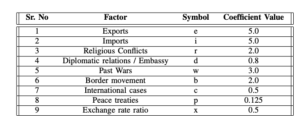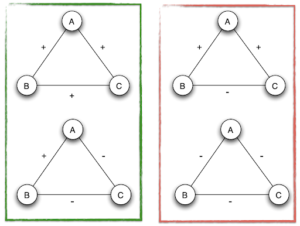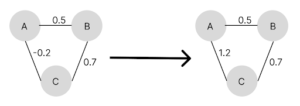Motivation
War is something that has always been a part of human history whether we like it or not. The human race collectively has been known to resort to it to resolve disputes over resources, ideologies, and other differences. Depending on how out of hand these disputes become, the size of these wars can range from 2 neighbouring countries to the whole world. We have already had two world wars (world war 1 and world war 2) and had multiple scares for another in the 21st century.
This got me thinking if something were to kick off world war 3 (WW3) today, what would the faction look like? Would there be one faction with a clear advantage over the other and where would Canada as a country land in this war? I decided to use graph theory, specifically signed networks, and the balance theorem to help me answer these questions.
Analysis
For this analysis, we will have to assume that every country will participate in our hypothetical WW3. First, before we begin WW3 we need to quantify the relationship between countries to be either positive or negative. Unfortunately, in the real world, it is a bit more complicated than a pair of countries being either friends or enemies. We instead will assign a real value to each pair of countries’ relationship based on several different weighted factors including exports, imports, religious conflicts, diplomatic relations, past wars, border movement, international cases, peace treaties, and exchange rate ratio (the specific way each factor will be calculated will be omitted for brevity).

After each pair of countries has their respective relationship values, we can finally begin WW3. We are assuming that the unstable triads (-, -, – or +, +, -) will conform and become stable (+, +, + or +, -, -) so we can use the balance theorem later on.

We will be using a more sophisticated method of balancing the graph and then randomly toggling the edges of unbalanced triads. Our method selects the lowest magnitude edge to toggle in an unstable triangle. Also, the value of the magnitude of that edge is replaced with the sum of the remaining edges or the sum of the remaining edges – the previous weight of the replaced edge depending on if it was initially negative or positive respectively. The slightly different way of calculating the negative to positive toggle is to ensure no huge enemies suddenly appear in our data set.

This method would eventually balance the graph (if run infinitely), but for our case, we ran it until our graph gave us an almost constant amount of stable triangles. Then by the balance theorem, we can divide the countries into 2 global factions with (theoretically) only positive edges between countries in the same faction and negative edges in countries with different factions. After dividing up the countries we surprisingly end up relatively equal teams when only considering the number of countries (99 in Set 1 and 98 in Set 2). Also, when looking at the top 10 countries with the biggest military, they are evenly distributed between the two factions. Though this may be misleading as the number one country in military spending, The US trumps the next 9 countries combined, and luckily Canada as a country is on their team.


So, how do we know our prediction is in any way accurate? Well, we can quantify our accuracy by backtesting our factions with known allies and enemies in the real world. This tells us out of the known 43 relationships, we correctly predicted 32 (74.4%). Though keep in mind some of this inaccuracy is probably due to us not completely balancing the graph because of computational limits. But this shows the algorithms and decisions we made provide a fairly accurate prediction (that of course can be fine-tuned to become even more accurate).
Conclusion
As with any fight, it pays to have friends who are willing to help out and with an increasingly interconnected world, it becomes a larger and larger possibility for a global conflict. It would be naive of us to believe that WW3 could never happen (especially with all the recent close calls). But by utilising graph theory we can somewhat put our minds to ease by determining who will be our friends and who will be our foes.
Sources
Chowdhury, Ranjana Roy, et al. “World War III Analysis Using Signed Social Networks.” ArXiv.org, 24 Aug. 2021, https://arxiv.org/abs/2105.12460.
“Ranked: The World’s 20 Strongest Militaries.” Business Insider, 13 July 2021, https://www.businessinsider.in/defense/ranked-the-worlds-20-strongest-militaries/slidelist/51930339.cms#slideid=51930374.
One reply on “Predicting the Factions Formed for (a Hypothetical) WW3 using Graph Theory”
Very relevant topic with regards to whats happening with Ukraine and Russia. I bet theres probably a lot of graph theory/international relations/political science coming together in current research.